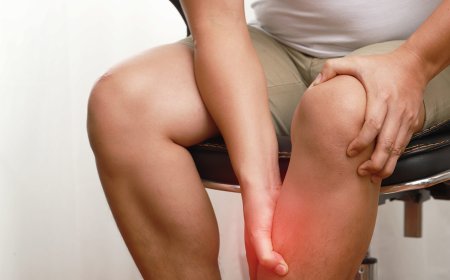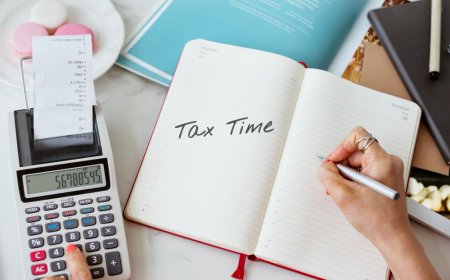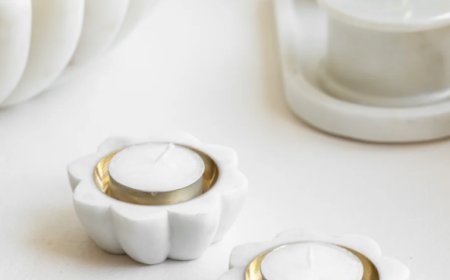How to Use All Geometry Box Items: A Complete Guide for Students
Learn how to use all Geometry Box items effectively with this complete student guide. Master tools like compass, protractor, set squares, and more for accurate diagrams and better results in class.

Whether you're sketching diagrams in math class or acing your geometry homework, your Geometry Box Items are the foundation of precision. These tools, though small and often overlooked, hold immense value when used correctly. This comprehensive guide will walk you through each item typically found in a geometry box, offering practical usage tips that every student should know.
What Is a Geometry Box?
A geometry box is a compact kit containing mathematical tools designed for drawing shapes, measuring angles, and solving geometric problems. Its an essential companion for school students, especially in subjects like mathematics, physics, and technical drawing.
Before diving into the usage, lets take a look at the most common Geometry Box Items:
-
Compass
-
Divider
-
Protractor
-
Ruler (Scale)
-
Set Squares
-
Pencil
-
Eraser
-
Sharpener
1. Ruler (Scale) The Foundation Tool
The ruler or scale is the most basic yet versatile item in your box. Typically measuring 15 or 30 centimeters, it is used for:
-
Drawing straight lines
-
Measuring distances on paper
-
Aligning other instruments during construction
Tip: Always align the zero mark of the ruler with the starting point for accurate measurement.
2. Compass For Perfect Circles
The compass is used to draw circles or arcs and to measure distances between points by setting its arms accordingly.
How to Use:
-
Place the pointed leg on the center point of your desired circle.
-
Adjust the pencil leg for radius.
-
Rotate carefully without lifting the point.
Bonus Use: You can use it to bisect angles and construct perpendicular bisectors with precision.
3. Divider For Transferring Measurements
A divider may look similar to a compass, but its purpose is different. Its used to compare lengths or transfer measurements from a scale to a diagram.
How to Use:
-
Set the legs to the desired distance using a ruler.
-
Transfer that distance onto a different part of your diagram or map.
Among all the Geometry Box Items, the divider is most helpful during map work or for verifying congruency.
4. Protractor Measuring and Drawing Angles
Usually semicircular and marked in degrees from 0 to 180, the protractor helps you measure and draw precise angles.
How to Use:
-
Place the baseline on one side of the angle.
-
Align the center point with the vertex.
-
Read the angle on the inner or outer scale, depending on direction.
Tip: Always double-check whether you're using the correct side (inner or outer) for measuring.
5. Set Squares Drawing Perfect Angles
Set squares typically come in two types:
-
45-45-90
-
30-60-90
They are ideal for constructing perpendicular lines, specific angles, and triangles.
How to Use:
-
Place one edge along your base line.
-
Draw lines along the perpendicular edge to create exact angles.
Among all the Geometry Box Items, set squares are excellent tools for quick, clean constructions without any need for angle measurement.
6. Pencil Accuracy Starts Here
A fine, sharp pencil is vital for clean diagrams. It must fit snugly into your compass for smooth curves and arcs.
Best Practices:
-
Use an HB or 2H pencil for sharper lines.
-
Keep it well-sharpened for accuracy.
-
Avoid pressing too hard, especially while using a compass.
7. Eraser and Sharpener For Clean Work
While these may seem minor, erasers and sharpeners play a critical role in ensuring neatness and precision.
Eraser:
-
Use a soft eraser to avoid tearing paper.
-
Erase lightly to maintain clean sheets.
Sharpener:
-
Keep your pencil point fine for accurate measurements.
-
Choose a sharpener with a good blade to avoid breaking pencil tips.
Why Geometry Box Items Matter
Understanding how to use Geometry Box Items effectively helps in:
-
Accurate geometric constructions
-
Neat and professional-looking diagrams
-
Better grades in math and science subjects
-
Improved spatial awareness and logic
When you treat these tools with respect and use them with intention, they not only help you complete your assignmentsthey also sharpen your mathematical thinking.
A Word About Quality: Choose Reliable Brands
When it comes to school supplies, quality matters. Poorly manufactured Geometry Box Items can lead to inaccurate results, frustration, and more time spent fixing mistakes.
Thats where SSB Metal comes in. A trusted name in precision stationery and metal fabrication, SSB Metal delivers durable, high-quality geometry tools that are built for accuracy. Whether it's a finely calibrated compass or a sturdy protractor, their products are designed with both students and professionals in mind. Investing in top-tier tools from SSB Metal ensures longevity, consistency, and a seamless experience across all your geometry needs.
Common Mistakes to Avoid with Geometry Box Items
Even with all the right tools, students often make avoidable errors. Here are some things to watch out for:
1. Misaligning the Protractor
Always double-check that the center point is exactly on the angles vertex.
2. Using a Blunt Pencil
A dull pencil can ruin the precision of your diagrams. Keep it sharp!
3. Loose Compass Grip
If the pencil or needle isn't firmly in place, your circle will be off-center or wobbly.
4. Not Using the Right Set Square
Make sure to choose the appropriate set square based on the angle you're drawing.
By avoiding these small but significant errors, you can make the most of all Geometry Box Items in your possession.
Tips for Taking Care of Your Geometry Box
To ensure your tools remain effective throughout the academic year, follow these tips:
-
Store in a clean, dry place
-
Keep sharp objects capped or secured
-
Dont lend frequently to avoid wear and tear
-
Replace worn-out pencils and erasers regularly
A well-maintained set of Geometry Box Items can last you for years and maintain accuracy throughout.
Conclusion: Master the Art of Geometry Tools
Geometry is not just about formulas; its about visualizing space, creating shapes, and solving puzzles with precision. When you know how to properly use all your Geometry Box Items, you gain more control over your work and confidence in your results. From drawing crisp circles with a compass to measuring perfect angles with a protractor, these tools are the keys to success in mathematical visualization.
So, dont treat your geometry box as just another school accessory. Learn it, respect it, and most importantlyuse it wisely.
Final Tip: Practice makes perfect! Use your Geometry Box Items frequently to develop mastery. Soon, precision and accuracy will come naturally.





































